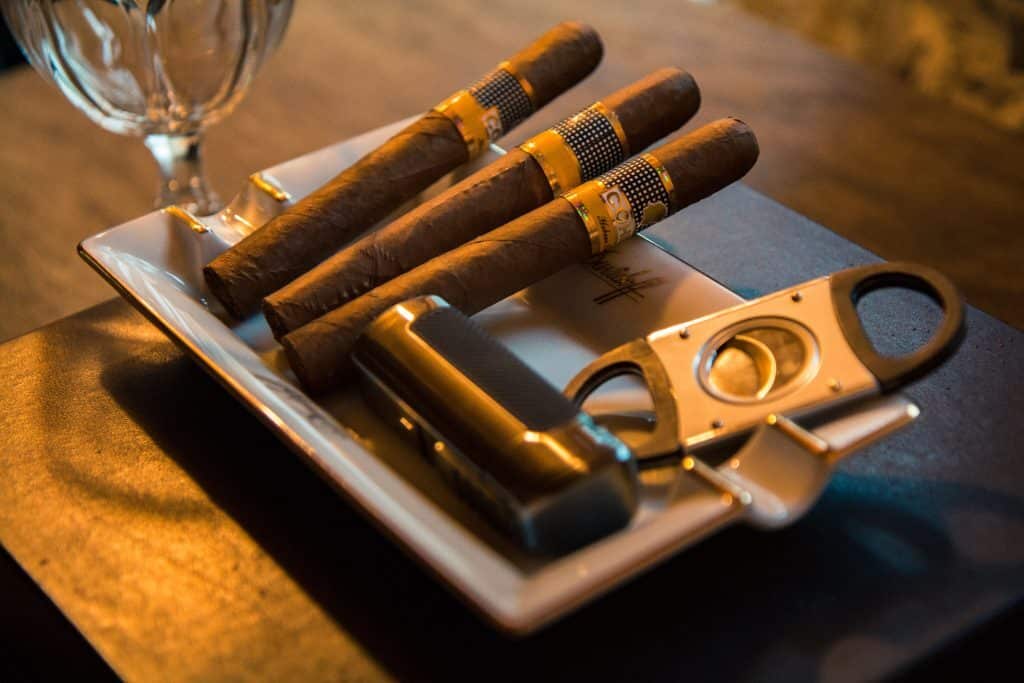The Guillotine Cigar Cutter
The guillotine cutter is the one most folks recognize as ‘the’ cigar cutter. It’s often depicted in photographs and film and it’s likely the one that you’re most familiar with, too. Found most places where you can buy cigars, cutters come in many sizes and materials. Yet, their designs are the same. There are single-blade and double-blade versions, and they’re simple to use. Double-blade guillotines are often preferred. The blades cut from both sides and there’s less risk of the wrapper tearing. Insert the cigar into the cutter until the cap meets the shoulder. Then, using firm pressure, press inward and even on the cutter on both sides. Voila! You have a cut cigar. Make sure your cigar cutter is sharp. A dull cutter can tear your outer wrapper instead of making a clean cut.
The V-Cutter
The V-cutter is a bit less common and you may not have used one before. Like the guillotine cutter, the V-cutter uses a blade moving through the cigar. But, it differs from the guillotine cutter by making a v-shaped channel in the cap. The result? You get a nice, even draw without completely cutting the cap off the cigar. There’s also less risk that you’ll cut too deep into the cigar. The downside? Well, a V-cutter will only work on a cigar that has a round cap to it – Torpedoes, Figurados, and Piramides are out. So, you’re a Toro aficionado? Give this one a shot.
The Punch Cutter
I can’t tell you how many times I’ve been on the golf course. I cringed at the sight of a spare golf tee plunged into the cap of a cigar. Right idea, wrong tool! A more refined method of this technique is using a punch cutter. A punch cutter uses a circular blade to ‘punch’ into the middle of the cap of the cigar. This creates a hole to draw smoke through. Punch cutters are available in many different shapes and sizes. They generally work best on larger ring cigars – think 40 ring size and up. Punch cutters are a great option if you despise getting tobacco bits in your mouth while smoking. That’s because the entire cap remains intact. The downside? Like the V-cutter, the punchcutter won’t work on Torpedo-type cigars. Depending on the size of the cigar, you may have a restricted draw – but that’s largely personal preference.
Photo Credit: Pixabay


